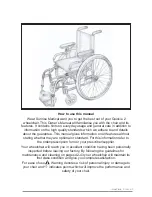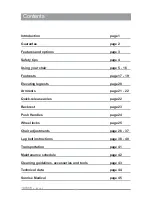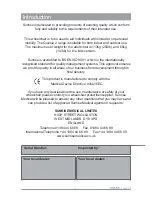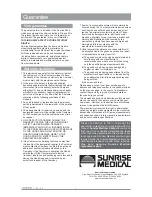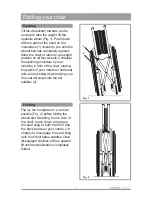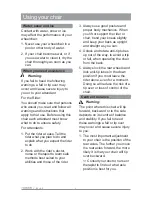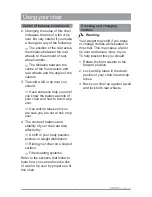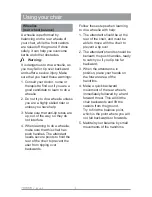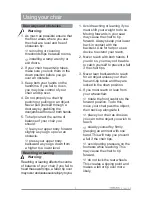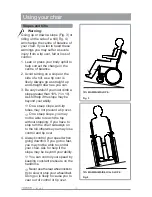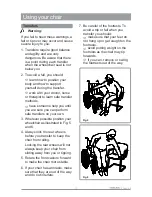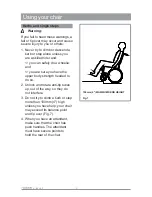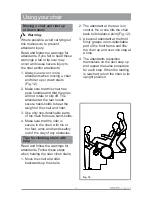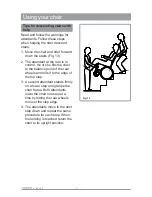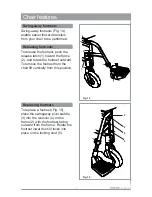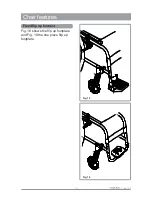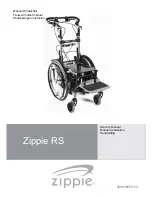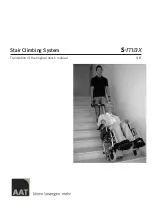
7
2 Issue 4
Using your chair
Centre of balance (continued)
2. Changing the setup of this chair
increases the risk of a fall or tip
over. Be very careful if you make
a change to any of the following:
!
The position of the rear axles,
the distance between the rear
wheels or the amount of rear
wheel camber.
!
The distance between the
centre of the front castors and
rear wheels and the angle of the
castors.
3. To avoid a fall or tip over you
should:
!
Have someone help you until
you know the balance points of
your chair and how to avoid a tip
over.
!
Use anti-tip tubes until you
are sure you are not at risk to tip
over.
4. The centre of balance and
stability of your chair are also
affected by:
!
A shift in your body position,
posture or weight distribution.
!
Riding your chair on a sloped
surface.
!
Fitted seating systems.
Refer to the sections that follow to
learn how you can reduce the risk
of a fall or tip over by proper use of
this chair.
Dressing and changing
clothes
Warning:
Your weight may shift if you dress
or change clothes while seated in
this chair. This may cause a fall or
tip over and severe injury to you.
To help prevent this you should:
1. Rotate the front castors to the
forward position.
2. Lock anti-tip tubes in the down
position if your chair has anti-tip
tubes.
3. Back your chair up against a wall
and lock both rear wheels.



